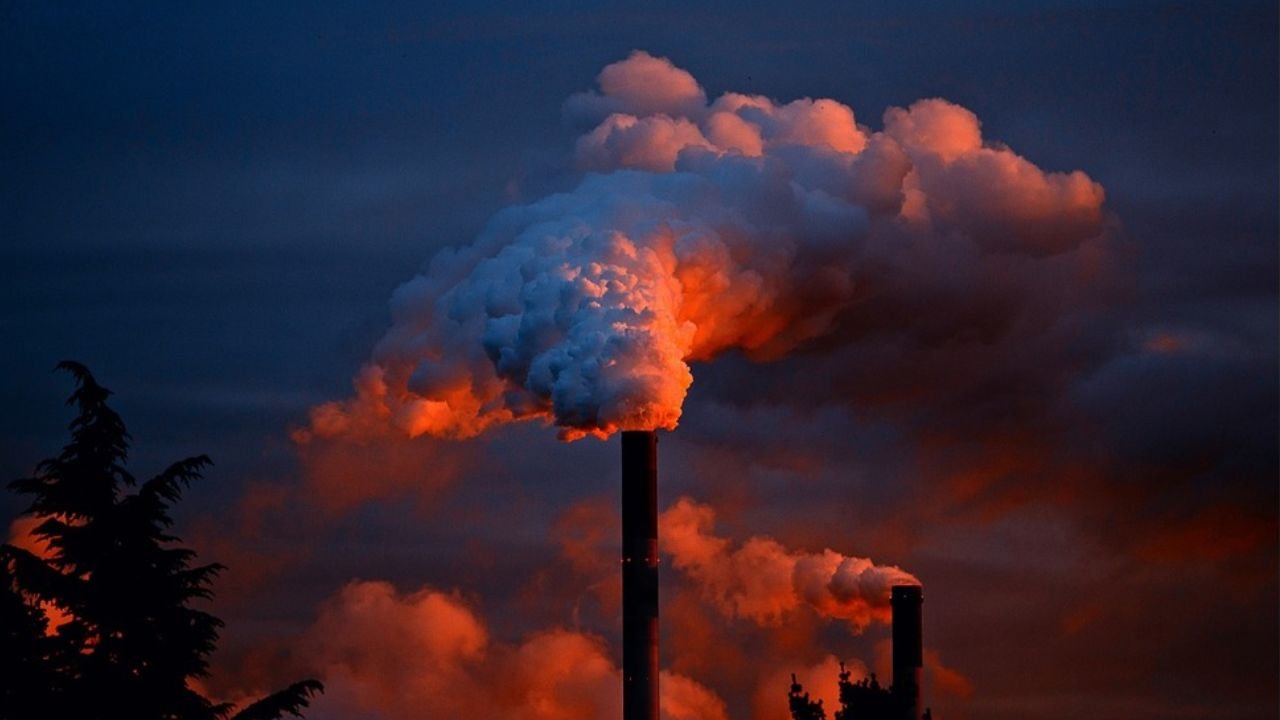In today’s world, environmental pollution has become one of the most pressing global challenges. From bustling metropolises to smaller towns, air and water quality affect everyone. But how do pollution levels differ between cities with diverse industrial backgrounds, populations, and ecosystems? In this dorsten vs fresno pollution coparament we will delve into the specifics of how these two cities, located on different continents, manage environmental pollution and what that means for the health of their residents.
Both cities face their own challenges when it comes to pollution. However, the reasons behind these challenges are different, leading to unique solutions for each. Understanding these differences offers insight into how geography, industrialization, and regulation influence air quality and overall environmental health.
Dorsten: A Historical Town with Modern Environmental Challenges
Dorsten is a quaint town located in North Rhine-Westphalia, Germany, with a rich history stretching back to the Middle Ages. Despite its small size, the town has a modern industrial presence, which poses environmental concerns. Like many parts of Germany, Dorsten has worked diligently to manage pollution and promote sustainability through strict environmental laws and green energy initiatives. Coal mining, a historically significant industry in this region, left its mark on the local environment.
Key Environmental Factors in Dorsten:
- Traffic Pollution: One of the most significant contributors to air pollution in Dorsten is vehicular emissions. The town’s proximity to larger cities increases traffic-related pollution.
- Industrial Legacy: The legacy of coal mining and other heavy industries has impacted air and soil quality, although improvements have been made.
- Government Regulations: Germany’s stringent environmental regulations help reduce emissions and ensure that industries comply with standards for clean air and water.
Fresno: Pollution in California’s Agricultural Hub
However, this industry, along with the city’s rapid growth and geographic location, contributes to its pollution problems. Fresno consistently ranks among the cities with the worst air quality in the United States, primarily due to a combination of vehicle emissions, agricultural practices, and industrial pollutants.
Surrounded by mountains, the city experiences a phenomenon called “air stagnation,” which traps pollutants and makes it difficult for clean air to circulate. Additionally, Fresno’s hot, dry climate exacerbates these issues, contributing to higher levels of ozone and particulate matter, which are harmful to health.
Key Environmental Factors in Fresno:
- Agricultural Pollution: Fresno is at the heart of California’s agricultural industry, and while this industry is essential for the economy, it also contributes significantly to water and air pollution. Pesticides, fertilizers, and livestock emissions are major concerns.
- Vehicle Emissions: Like many growing cities, Fresno struggles with pollution from vehicles.
- Geographical Challenges: Fresno’s location in a valley surrounded by mountains makes it prone to air stagnation.
Comparing Air Quality: Dorsten vs Fresno
When comparing air quality in Dorsten vs Fresno, the difference is stark. Dorsten benefits from Germany’s strict environmental policies, which enforce limits on emissions and promote clean energy. Fresno, on the other hand, faces unique geographical challenges that make it difficult to control pollution levels.
Air Quality in Dorsten: The town’s efforts to promote renewable energy and reduce traffic pollution also contribute to better air quality.
Air Quality in Fresno: In contrast, Fresno’s air quality is among the worst in the United States. The combination of agricultural activities, vehicle emissions, and geographical constraints results in high levels of ozone and particulate matter. Fresno frequently experiences poor air quality days, especially during the summer when temperatures rise and pollution levels peak.
The Health Impact of Pollution in Dorsten vs Fresno
The health impact of pollution is another key point of comparison between Dorsten vs Fresno. In both cities, long-term exposure to pollutants can lead to serious health conditions, but the severity and types of health issues differ based on the nature of the pollution.
Health Effects in Dorsten: Residents of Dorsten may experience health issues related to traffic and industrial pollution, although the risk is mitigated by Germany’s strong healthcare system and preventive measures.
Health Effects in Fresno: Fresno’s pollution poses a much greater health risk to its residents. Children, the elderly, and those with pre-existing health conditions are particularly vulnerable. The combination of agricultural pollutants and vehicle emissions makes air quality in Fresno a significant public health concern.
Environmental Policies: Germany vs California
Environmental Policies in Dorsten: The country has implemented a range of policies designed to reduce pollution, including stringent emissions standards for vehicles and industries, subsidies for renewable energy, and programs to promote energy efficiency. In Dorsten, these policies help mitigate the impact of industrial pollution and improve air quality.
Environmental Policies in Fresno: California is also a leader in environmental policy, but Fresno’s pollution challenges are more complex. The state has implemented aggressive measures to reduce vehicle emissions and promote renewable energy, but Fresno’s geography and reliance on agriculture make it difficult to achieve the same results as seen in Dorsten. Efforts to improve air quality in Fresno are ongoing, but progress is slow due to the region’s unique challenges.
Water Pollution in Dorsten vs Fresno
In addition to air pollution, water quality is another important aspect of the Dorsten vs Fresno pollution comparison. Both cities face challenges related to water pollution, although the sources and severity of the pollution differ.
Water Pollution in Dorsten: Water pollution in Dorsten is primarily related to industrial activities, although strict regulations have significantly reduced the impact of these pollutants. Efforts to reduce agricultural runoff and industrial discharge have been successful, resulting in relatively good water quality in Dorsten.
Water Pollution in Fresno: Water pollution in Fresno is a more pressing concern due to the city’s agricultural activities. Pesticides, fertilizers, and other chemicals used in farming often find their way into local water supplies, posing risks to both human health and the environment. Additionally, California’s ongoing drought has strained water resources, making it even more difficult to ensure clean water for Fresno’s growing population.
Conclusion:
In conclusion, the Dorsten vs Fresno pollution comparison highlights the stark differences in how two cities on opposite sides of the world manage their environmental challenges. While both cities face pollution problems, Dorsten benefits from strong government regulations and a commitment to sustainability, whereas Fresno struggles with the unique challenges posed by its geography and reliance on agriculture.
Going forward, both cities can learn from each other. Dorsten’s success in reducing industrial pollution offers valuable lessons for Fresno, while Fresno’s efforts to tackle agricultural pollution can provide insights for other regions facing similar challenges. The future of pollution control in both cities will depend on continued innovation, investment in clean technologies, and a commitment to protecting public health and the environment.
Also Read: Viprow.us.com: Your Ultimate Destination for Free Sports Streaming
FAQs
What are the main sources of pollution in Dorsten?
Dorsten’s pollution is mainly driven by traffic emissions and the legacy of industrial activities, although strict environmental regulations help mitigate these impacts.
Why is Fresno’s air quality so poor?
Fresno’s poor air quality is due to a combination of vehicle emissions, agricultural pollutants, and geographical factors that trap pollutants in the Central Valley.
How does geography impact Fresno’s pollution levels?
Fresno is located in a valley surrounded by mountains, which causes air stagnation and traps pollutants, making it difficult for the air to circulate.
What health risks are associated with pollution in Fresno?
High levels of ozone and particulate matter in Fresno are linked to respiratory diseases such as asthma, as well as cardiovascular conditions.
How does Germany manage pollution in small towns like Dorsten?
Germany has strict environmental laws that regulate emissions from vehicles and industries, and the country promotes renewable energy and sustainability programs.
What is being done to improve air quality in Fresno?
California has implemented policies to reduce vehicle emissions and promote renewable energy, but Fresno’s unique challenges require additional efforts to address agricultural pollution and improve public transportation.





